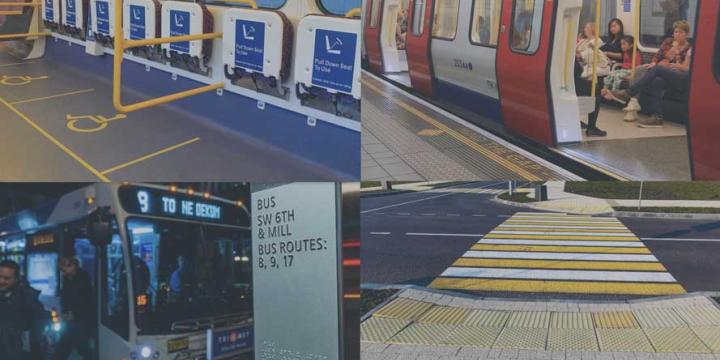Explore Urban Planning Courses
Discover hundreds of courses, with new courses added weekly.
Our most popular courses
Browse by software
Join thousands of urban planners on Planetizen Courses
Browse All Courses
Roadways for People, Part 1
Using Portland's I-5 Rose Quarter Improvement Project as a central case study, Lynn Peterson and co-instructor Elizabeth Doerr explore why and how we need a more inclusive, people-centered transportation planning process.
Crime and Urban Planning in the United States
The spatial patterns and environmental characteristics of urban crime offer planners an opportunity to contribute to building crime-resilient communities.
Just Suburbs: The New Frontier for Equity and Inclusion
Poverty is being displaced from central cities to suburbs. As a response, planners should look to strategies that create mixed-income neighborhoods—a place that everyone can call home.
Suburban Remix: Creating the Next Generation of Urban Places
The economic, demographic, and technological forces reshaping suburbs are under-reported and misunderstood. Learn how suburbs can manage change while enhancing livability, economic opportunity, and fiscal responsibility.
Equitable Transit Oriented Development
Equitable transit oriented development (eTOD) prioritizes inclusive community development in multi-modal regional growth.
The Theory and Practice of Culture and Placemaking
Learn about the complex issues at play in the interaction between culture and place: the urbanization process, the historical significance of tools used by urban planners, early American urban theories, and the power of social movements.
Introduction to Culture and Placemaking
Explore the urban theories that have prepared urbanists and planners alike to recognize culture and embrace of diversity as significant mechanisms for shaping the city and the fate of urban landscapes.
Methods for Neighborhood Scale Revitalization
This course presents a rigorous but adaptable methodology that builds on the strengths of neighborhoods to develop customized approaches for addressing challenges that directly respond to the needs and vision of each neighborhood.
Women and Cities 5: The Feminist Future City
This final chapter speculates on what a feminist city could look like, recalling case studies and ancient examples that include contemporary contexts but also consider future needs for a more heart-centered city designed for everyone.
Women and Cities 4: Gender Equity in the Public Sphere
This course will outline the way in which women have occupied public spaces and the transition into a greater level of visibility for women in cities.
Women and Cities 3: Gender Equity in Private Life
This course explores interiors as they relate to gender equity using several case studies as examples.
Women and Cities: Gender Equity, Past and Present
Investigate the meaning of “feminist city planning” by exploring how women have impacted cities past and present and imagining what a women-led city would look like from a variety of perspectives—both bottom-up and top-down.
Planning for Racial Equity
This course introduces the concept of racial equity analysis in land use planning, the motives and rationales behind such analyses, and provides guidance for conducting analysis and review.
Working With Cross-Cultural Differences
At the end of this course, participants should have a basic understanding of some of the theoretical dimensions of culture that help us to understand cross-cultural differences.
Measuring Neighborhood Segregation and Diversity
This course reviews the various ways to measure both segregation and diversity at the neighborhood scale.
United States Census 2020: All About Census 2020
Learn all about the upcoming Census. This course provides an overview of planned operations and discusses the Census schedule, process, products, accuracy, publicity, and jobs.
United States Census 2020: Using FactFinder and the American Community Survey
Learn how to use Census.gov and American FactFinder websites, which are the principal portals to Census Bureau data products and maps.
United States Census 2020: Introduction
This course covers basic Census Bureau geography and Census-taking concepts. It reviews the Census Bureau’s mission and development of the nation’s statistical and geographic "architecture" that is the basis of almost all general purpose used in government, academia, and the business world.
Working with Census.gov 1: Background and Geography
This first of four courses on the Census -- Background and Geography -- will prime you to understand how the Census works, where the data comes from, as well as vital terminology and data sets you should be familiar with in the built environment.
Working with Census.gov 2: Topics, Programs, Products
This second of four courses delves deeper into the Census 'architecture'. In course 2 of "Working with Census.gov", Dr. Chris Williamson, a.k.a. Dr. Data, provides an overview on the federally mandated topics that lead to programs which ultimately produce products for the public. Course 2 also delves into such tricky topics as Census data table analysis and gives insider tips and goodies from a Census Bureau veteran.

Start Learning with Planetizen Courses
Choose from affordable subscription options to access hundreds of online courses today.
Try Free Courses

























